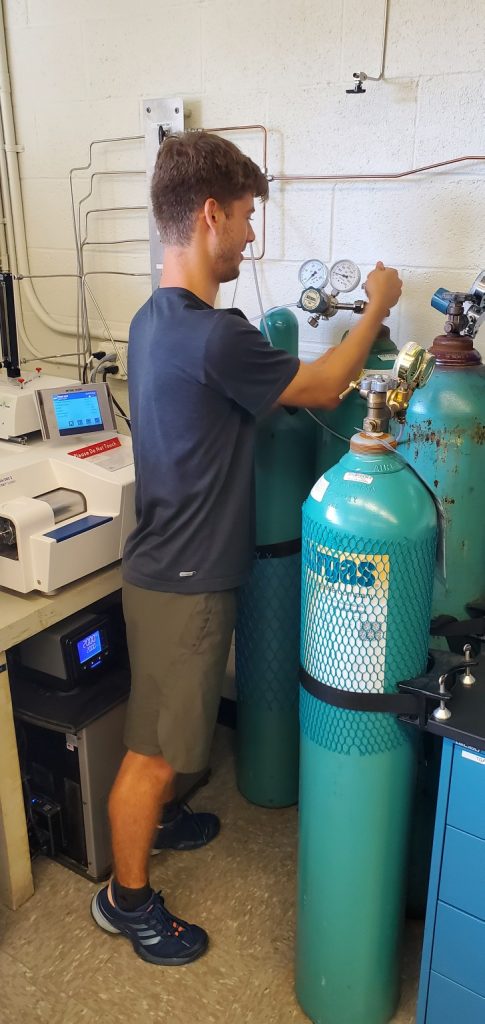From internships in large production facilities and laboratories to fieldwork in Hawaii, nine Eastern Mennonite University students gave fellow students, professors and the campus community a snapshot of their summer experiences this week.
The fall STEM Student Symposium featured engineering majors speaking about internships, as well as biology, chemistry and environmental sustainability majors sharing about research projects. Several worked in partnership with EMU professors and were funded by the Kauffman-Miller Research Awards and the CT Assist Summer Experiential Learning Program. One student participated in the the prestigious National Science Foundation-funded Research Experience for Undergraduates program.

Jonas Beachy studied water-splitting viability oxides in thermochemical cycling at the University of Florida in Gainesville, Florida. Working in Professor Jonathan Scheffe’s Renewable Energy Conversion Laboratory, Beachy explored thermochemical cycling, “a process that uses concentrated thermal energy from the sun to create favorable thermodynamics to ‘split’ water in H₂ and O,” he said. “H₂ can then be processed in hydrogen fuel cells to release energy. I was looking at oxides that would potentially have greater efficiency in producing H₂.”
Beachy appreciated the experience of working in a large university laboratory, “similar to what a graduate school experience would be,” and now feels a bit more ready to take the leap himself. He also enjoyed meeting the other REU participants and exploring Gainesville together.
Beachy is one among many EMU students who have been selected for the REU program. The most recent was Jake Myers, then a sophomore, who researched the regional effects of invasive tree species on daily nest survival at University of South Dakota.
More Highlights
Ben Bontrager-Singer spoke about his experience with mechanical engineering of HVAC systems for new construction.
Cameron Byer shared learnings from an internship at VistaShare, a company in Harrisonburg owned by EMU alumni.
Erin Clayton and Graciella Odelia spoke about their research with Professor Jeff Copeland on measuring the expression of RNF-11 and Parkin in Parkinson’s Drosophila.
Hannah Giagnocavo worked with Professor Kristopher Schmidt on the pathogenic changes and immune responses in C. elegans.
Cheyenne Suamatae’a-Te’o also worked with Schmidt on a project observing the behaviors of C. elegans when placed on differing bacterial plates.
Luke Wheeler shared highlights from a virtual internship with Engineers in Action (EIA) and an in-person internship at Danone International in Mt. Crawford, Virginia. With EIA, he helped to create training materials on chapter development and compiled lists of resources. As bridge projects are a large contribution of many chapters, he also pulled together instructions on how to make bridge designs, using the Revit program.
While a learning and development intern at Danone, he appreciated the opportunity to learn from upper-level management and contribute to improvements in plant production. Another highlight was seeing “the inner operations of a massive production facility,” he said.
Theo Yoder travelled with Professor Matt Siderhurst and fellow student Nicole Miller to conduct research on controlling agricultural pests. They were based at the Daniel K. Inouye U.S. Pacific Basin Agricultural Research Center.
His research explored the development of protein lures to attract, trap and control Melon Fly populations. This research will be continued in Australia over the next several years with a focus on benzaldehyde and pyrazine, two abundant compounds we found in effective lures.

